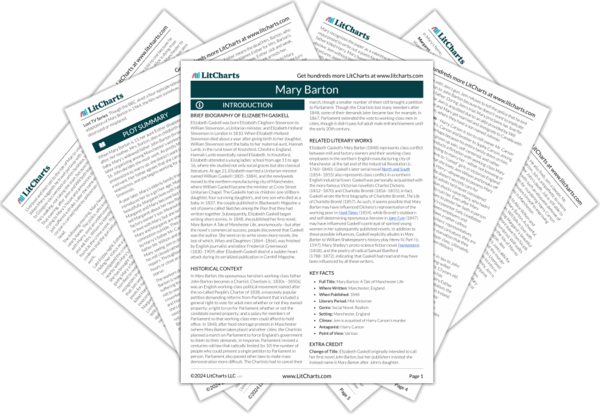Mrs. Wilson’s factory accident points out again how Victorian employers, knowingly or not, accrue wealth from working conditions that harm their employees. John’s casual admission that lots of people thought Mr. Wilson should have jilted his fiancée due to disability shows the penetration of romance by economics: people think wives should be domestic workers, which imperils disabled women in the marriage market.
